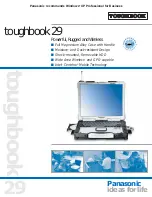
+
-
+
-
+
-
+
-
+
-
+
-
BC6
Warnings and safety notes
Never leave the charge unsupervised when it is connected to its power supply. If any
malfunction is observed immediately terminate the process and refer to the operation manual.
Keep away the unit from dust, damp, rain, heat direct sunshine and vibration. Do not drop it.
The circuit of the unit is designed to be powered by 12V DC or 100V~240V AC. But
do not
supply both input power simultaneously. The circuit can be damaged permanently.
This unit and the battery to charge or discharge should be set up on a head-resistant,
non-inflammable and non-conductive surface. Never place them on a car seat, carpet or similar.
Keep all the inflammable volatile materials well away from operating area.
Be sure to understand the information of the battery to be charged or discharged accurately. If
the program is set up incorrectly the battery can severely be damaged. Especially Lithium
battery can cause a fire or an explosion by over-charging.
NiCd/NiMH voltage level: 1.2V/cell
allowable fast charge current: 1C ~ 2C depends on the performance of cell
discharge voltage cut off level: 0.85V/cell(NiCd), 1.0V/cell(NiMH)
LiIo voltage level: 3.6V/cell
max. charge voltage: 4.1V/cell
allowable fast charge current: 1C or less
min. discharge voltage cut off level: 2.5V/cell or higher
LiPo voltage level: 3.7V/cell
max. charge voltage: 4.2V/cell
allowable fast charge current: 1C or less
discharge voltage cut off level: 3.0V/cell or higher
LiFe voltage level: 3.3V/cell
max. charge voltage: 3.6V/cell
allowable fast charge current: 4C or less (e.g. A123M1)
discharge voltage cut off level: 2.0V/cell or higher
Pb voltage level: 2.0V/cell
(Lead-acid) max. charge voltage: 2.46V/cell
allowable fast charge current: 0.4C or less
discharge voltage cut off level: 1.75V/cell or higher
To avoid short-circuits between the charge lead, always connect the charge cable to the unit first
and only then to the battery to be charged or discharged. Reverse the sequence when
disconnecting.
Do not connect more than one battery pack to the charge lead at any one time.
Do not attempt to charge or discharge the following types of battery.
- Battery pack, which consists of different types of cell (including different manufacturers).
- Battery, which is already fully charged or just slightly discharged.
- Non-rechargeable batteries (Explosion hazard).
- Batteries that require a different charge technique from NiCd, NiMH, LiIo, LiPo, LiFe or Pb.
- Faulty or damaged battery.
- Battery fitted with an integral charge circuit or a protection circuit.
- Batteries installed in a device, or which are electrically linked to other components.
- Batteries that are not expressly stated by the manufacturer to be suitable for the currents the
charger delivers during the charge process.
- 4 -





































